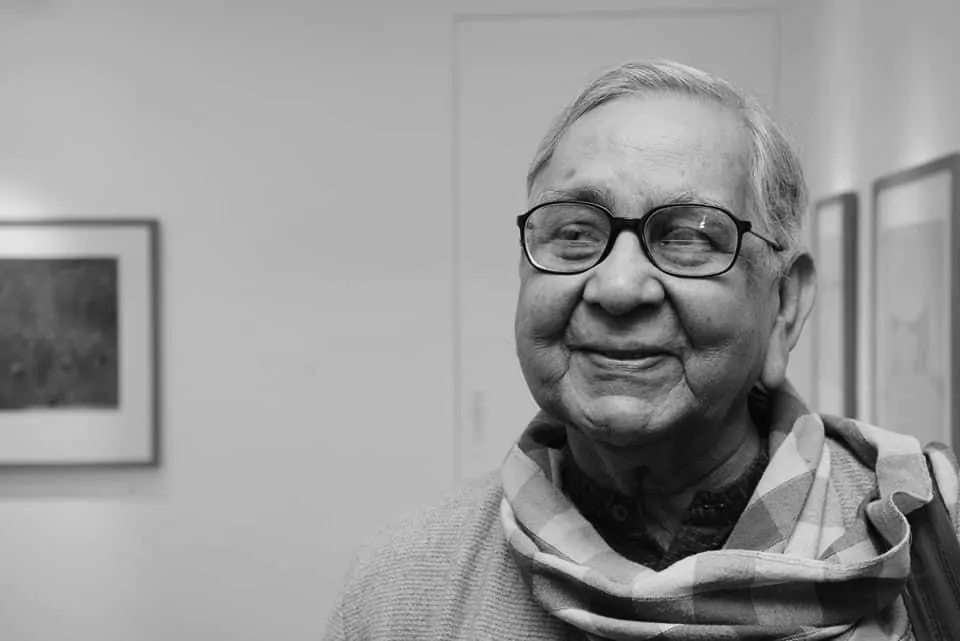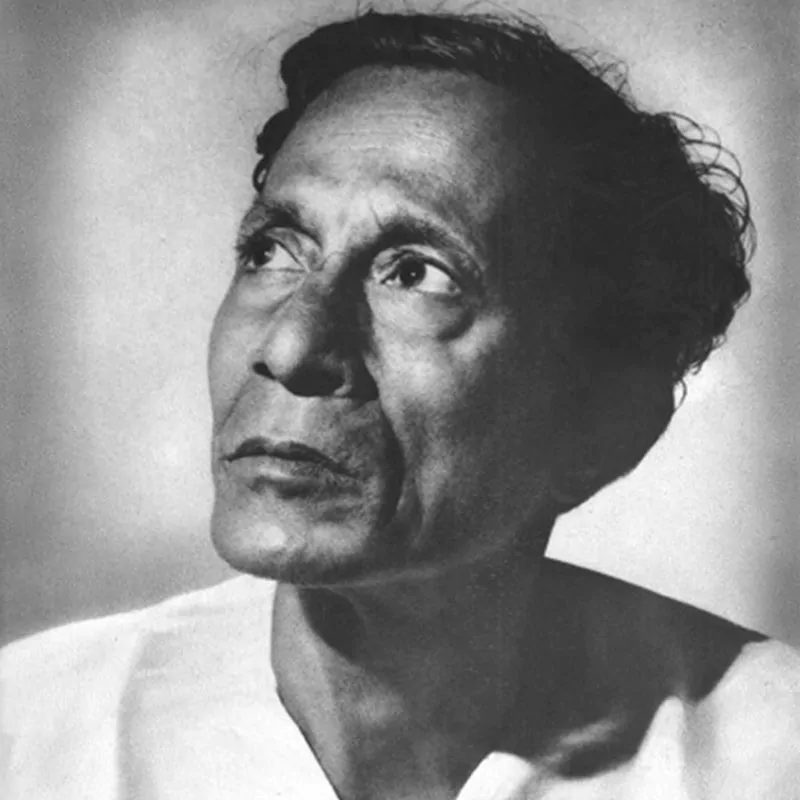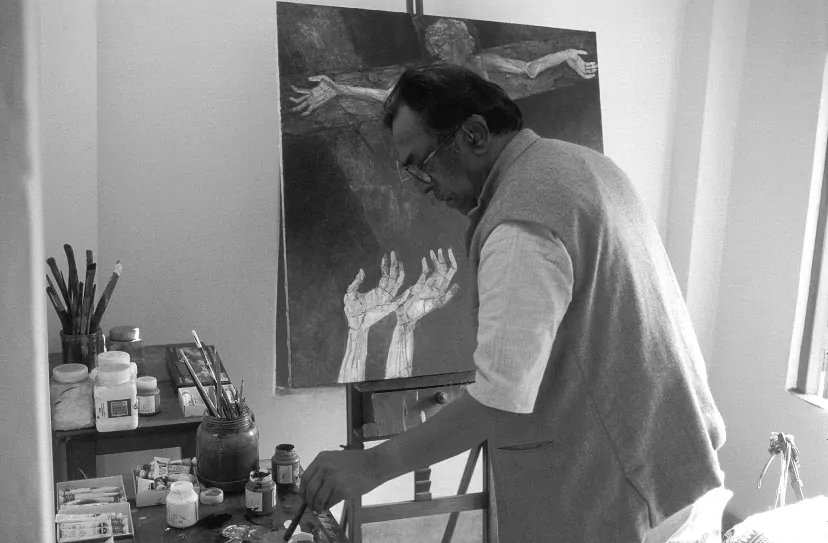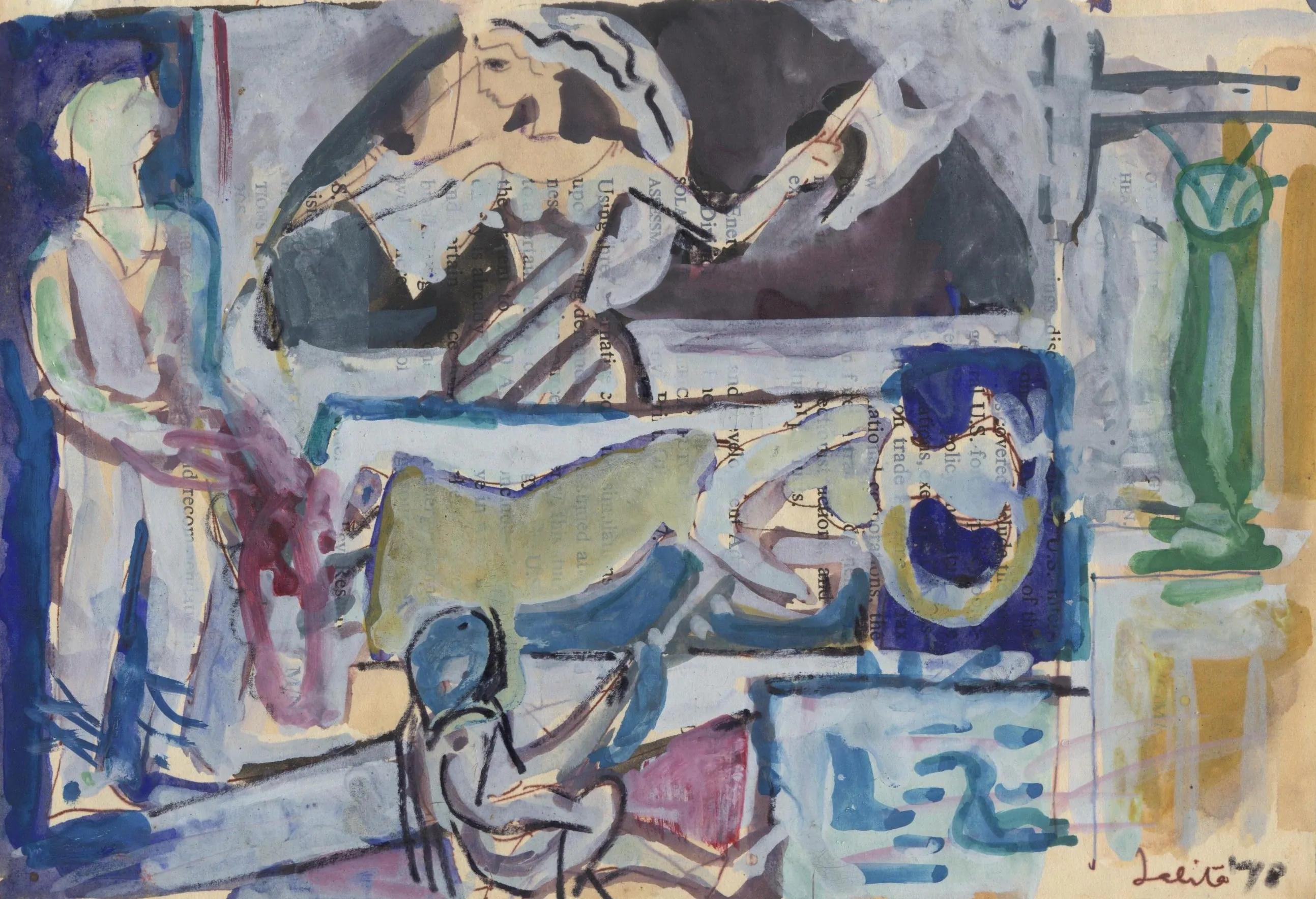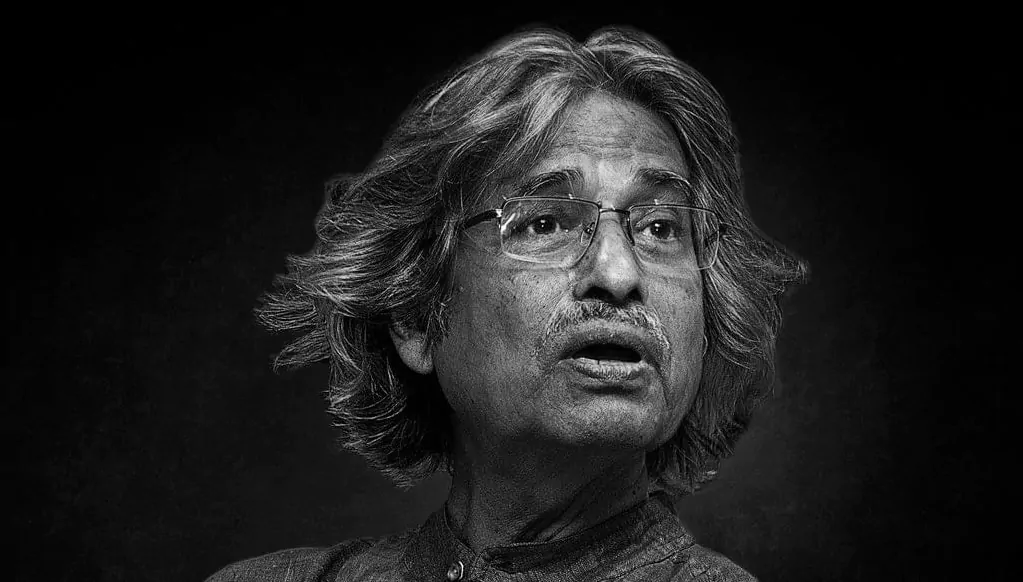Bhabesh Sanyal: Doyen of Indian Art.
As India was struggling for its Independence from the British Raj & later redefining itself post-independence, professor Bhabesh Sanyal & the Mayo School of Arts, Lahore was doing their bit in forming what could be called a parallel art movement.
The father of Indian modern art, as many of his students & friends, would always call him, Professor B.C.Sanyal was visited by students & friends associated with the Mayo School of Arts long after he left Lahore in 1947. He came to Lahore at the age of twenty-five to make the sculpture portrait of the nationalist leader Lala Lajpat Rai in 1926. This was the period when the Nationalist movement was gathering force & the British Raj was facing opposition on many fronts. Professor Sanyal, who was from Assam, had remained in Lahore in search of an artistic career. He was soon part of the Mayo College of Art, teaching carving, engraving to painting in oil & in watercolor. He was right in the center of the cultural milieu of Lahore. Sanyal’s presence was inspiring & young artists under his supervision soon learned more than what the routine syllabi prescribed or that of the colonial art institutions had to offer. His ideas & concepts were soon to run contrary to the colonial vision of the Mayo college for its radical approach & its authorities. He soon had to leave the Mayo College since it became difficult to continue working there. However, it was not so long when professor Sanyal had a studio place there where the young & the talented used to gather to exchange ideas & concepts. This became famous & everyone knew it as the Lahore Studio of Fine Arts.
During the tumultuous years of partition & independence, Bhabesh Sanyal came to Delhi & made his home near Humayun’s Tomb & close to the Nizamuddin Basti. With his coming to the basti, many were inspired to join him. He was joined by some of his Lahore friends who came to live close to him& it inevitably influenced others. Here he inculcated slowly but surely the growing sensibility of modernity in artistic practices in Delhi. Like his Nizamuddin house later the Gole market studio, his studio in Lahore had been the happening place where the current issues of art & its practice, the political philosophies & ideologies were the themes that were discussed & argued. All this was discussed & argued in an intellectually vibrant & artistic milieu, which never was exclusive, its warmth was all-inclusive. Amrita Sher-Gil, the brilliant Indo-European, trained in the modernist visual language, intensely involved with the modern art movement as it was happening in the art centers of Europe, was a frequent visitor to Sanyal’s studio. Indeed like many young & passionate artists of his time, Amrita Sher-Gil impressed him greatly. She had moved to Lahore after her marriage to her Hungarian cousin Hugo & had a studio where she worked from.
When Bhabesh Sanyal was invited to join the Mayo College of Arts, he was invariably the most adored, especially by the younger generation. He nurtured their talent & encouraged them gently by teaching & leading by example. Satish Gujral & Krishen Khanna were his two students from his Mayo College days. In Delhi,as in Lahore, Sanyal was actively building a movement that took Indian art to a depth & level that attracted the attention of the public & gained footage in the media that was slowly growing in the country.He worked for some years at the All India Fine Arts Society,taught at the Delhi Polytechnic that was later to become the Delhi College of Art. He was to become the chairman of the newly formed Lalit Kala Akademi. Krishen Khanna who is one of Sanyal’s students & one of the modernists who continued to work in the language developed at the Mayo College,where Bhabesh Sanyal’s presence & encouragement was opening new possibilities to look at things & to express it in a visual language that was informed by new developments in the world,both artistic & intellectual. A strong need was nurtured to be honest in one’s expression & to break new grounds to say what was contemporary & socially relevant.
Satish Gujral’s art is difficult to enclose in any neat category that is informed by ideology such as modernist. His apprenticeship with the great Mexican muralist Diego Rivera encouraged him to take the scale & the themes that were large & socially inclined.He later developed a language in architectural design.His murals & large canvases bear the mark of his early training at Mayo.
Bhabesh Sanyal,seen in this context of political legacies & structuring,in many senses never suffered from any obvious nostalgia or sentiment.He appears in his work & words always connected to all aspects of his life,his growing up in Assam,his refugee life near the Nizamuddin Basti,his fascination of the dark crows that remained for long his iconic signature, He had an immense capacity & perhaps here laid his genius to see life for what it was,to read meanings in their larger context & to seek & grow as a human,to keep bonds even when they were not in the mainstream political agenda of the Indian subcontinent.
Vinayak Pasricha.








